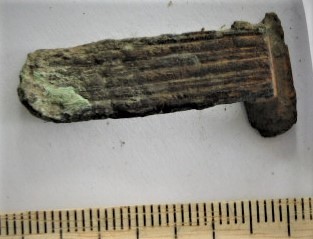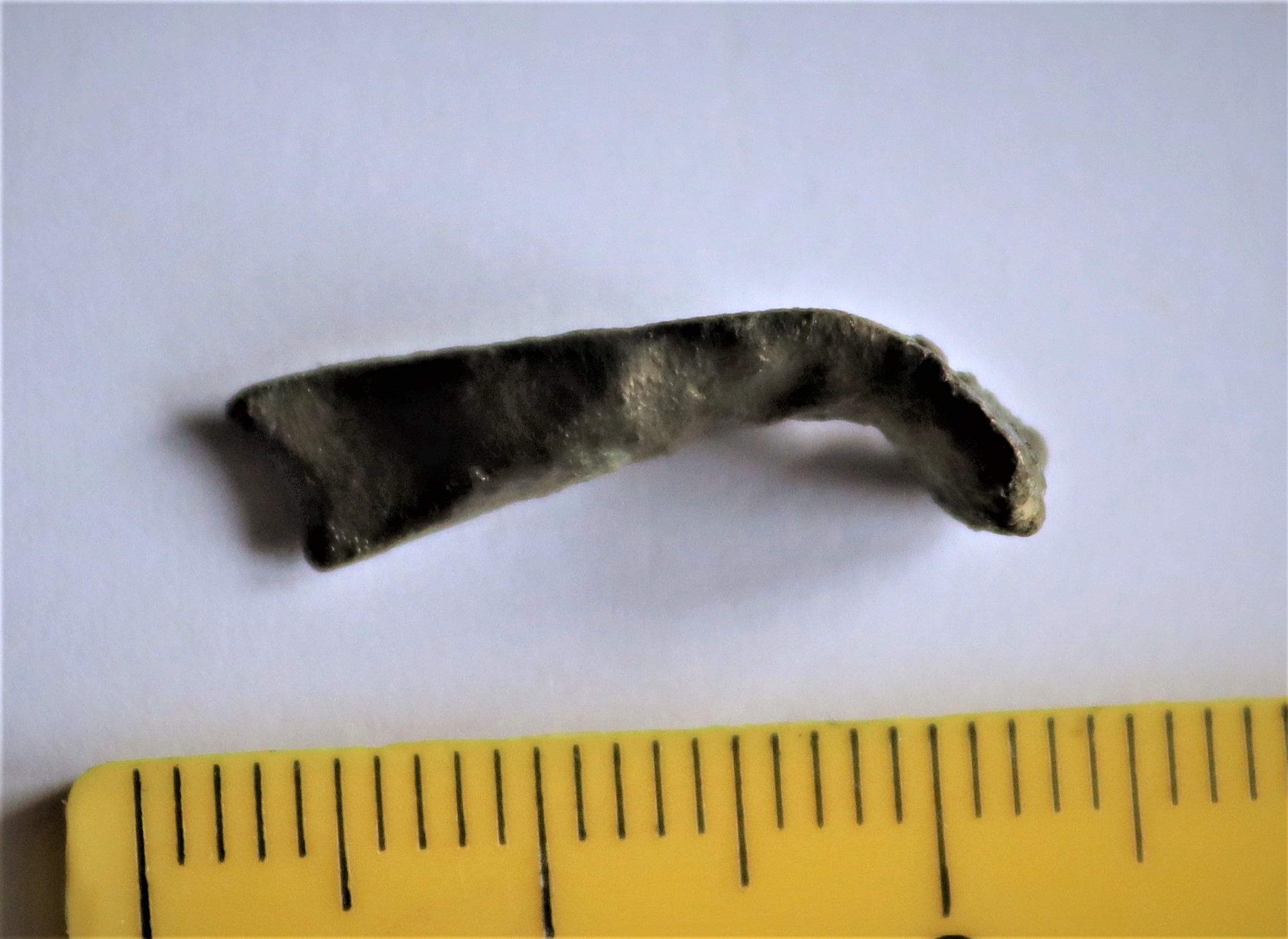Database
Our database is free to use for all history and archaeology enthusiasts. If you use our database, please do not forget to cite correctly:
Mägi, Marika; Palm, Piia Sandra. Archaeological Artefacts of Saaremaa. Foundation Osiliana / Tallinn University. Accessed: date.
The Osiliana Archaeological Database presents artefacts from Saaremaa and the surrounding small islands.
The database contains mainly Iron Age and Medieval finds that can be classified.
Undated metal or other pieces were generally excluded from the database.
Ceramics are represented by isolated examples.
The database is a work in progress and is constantly being updated.
Ure
Fragment of artefact, bronze. Higher loop for a belt to pass through. The longer part is decorated with long lines. The tip turns downwards at a perpendicular angle and ends with an oval plate that is situated crosswise to the rest of the artefact. On both parts of the plate, there has been a small bronze rivet, and one of these is snapped. It has been attached to either a wooden or leather object, e. g. a belt or a sword scabbard.
 ‘
‘ 
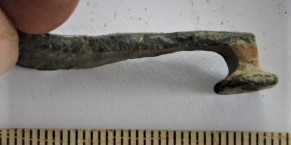
Parallels:
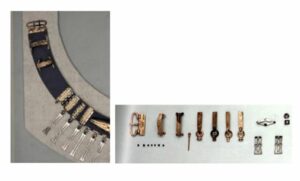
Similar mounts on the officer belts from Nydam (Jørgensen & Petersen 2003, 267, figs. 8, 9, fragments; photo National Museum/ John Lee).
Fragment of artefact, bronze. Higher loop for a belt to pass through. The longer part is decorated with long lines. The tip turns downwards at a perpendicular angle and ends with an oval plate that is situated crosswise to the rest of the artefact. On both parts of the plate, there has been a small bronze rivet, and one of these is snapped. It has been attached to either a wooden or leather object, e. g. a belt or a sword scabbard. Possibly from the same belt or from one of the belts from which Ure propeller-shaped fittings come (Jørgensen & Petersen 2003, 267).
Literature:
Jørgensen, E. & Petersen, P. V. 2003. Nydam mose – nye fund og iagttagelser. – Sejrens triumf. Norden i skyggen af det romerske imperium. Ed. by L. Jørgensen, B. Storgaard & L. Gebauer Thomsen. København, 258–294.
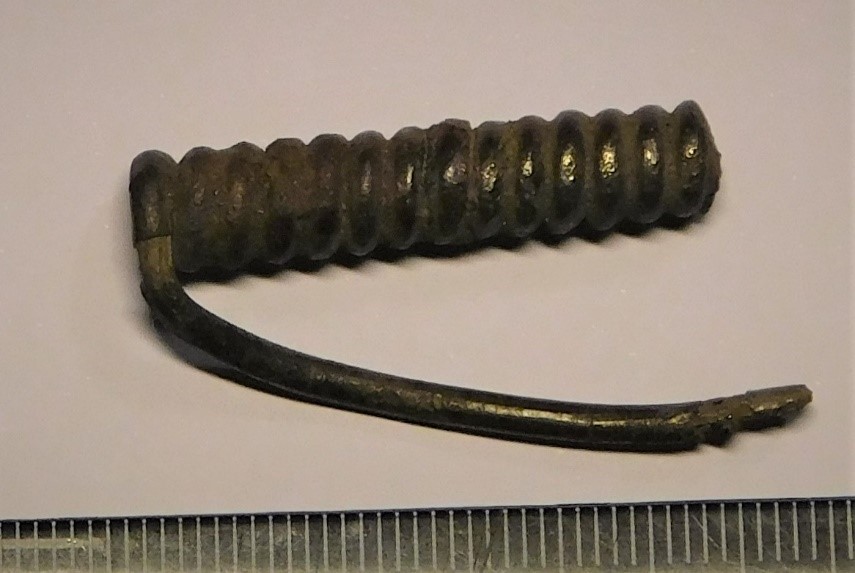
Ure
Crossbow brooch fragment, silver. A spiral coil wound around an iron rod with the fragment of a spring cord. The silver spring cord cross-section is otherwise rounded, but flattens out at the end of the cover – it must have been attached to an arch. It might belong to the Roman Iron Age.
Ure
Artefact fragment, bronze. From a brooch or a pin.


Artefact fragment, bronze. From a brooch or a pin.
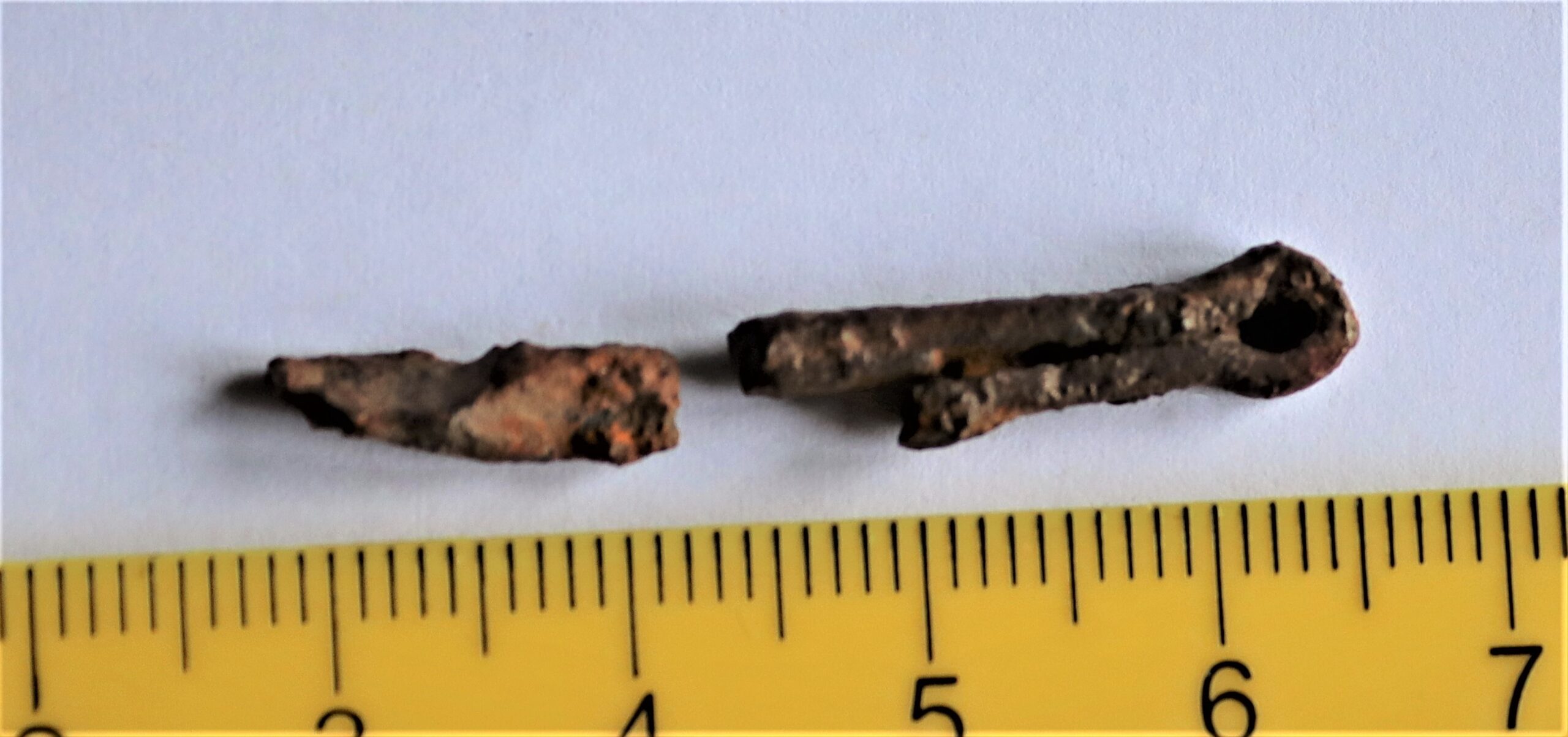
Ure
Loop fragments, iron, 2.

Ure
Artefact fragment, some kind of production surplus. Does not contain iron.
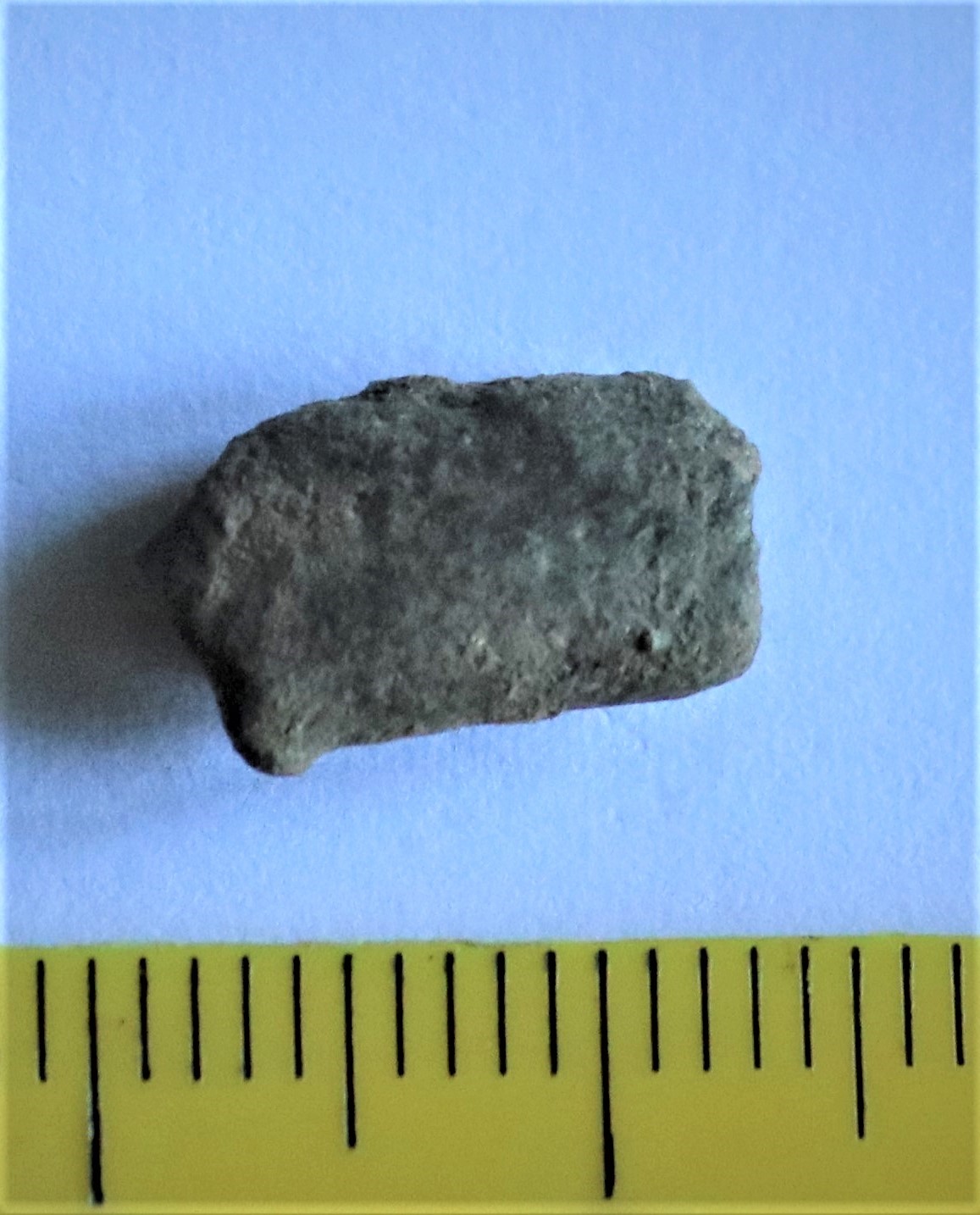
Ure
Artefact fragment, bronze.
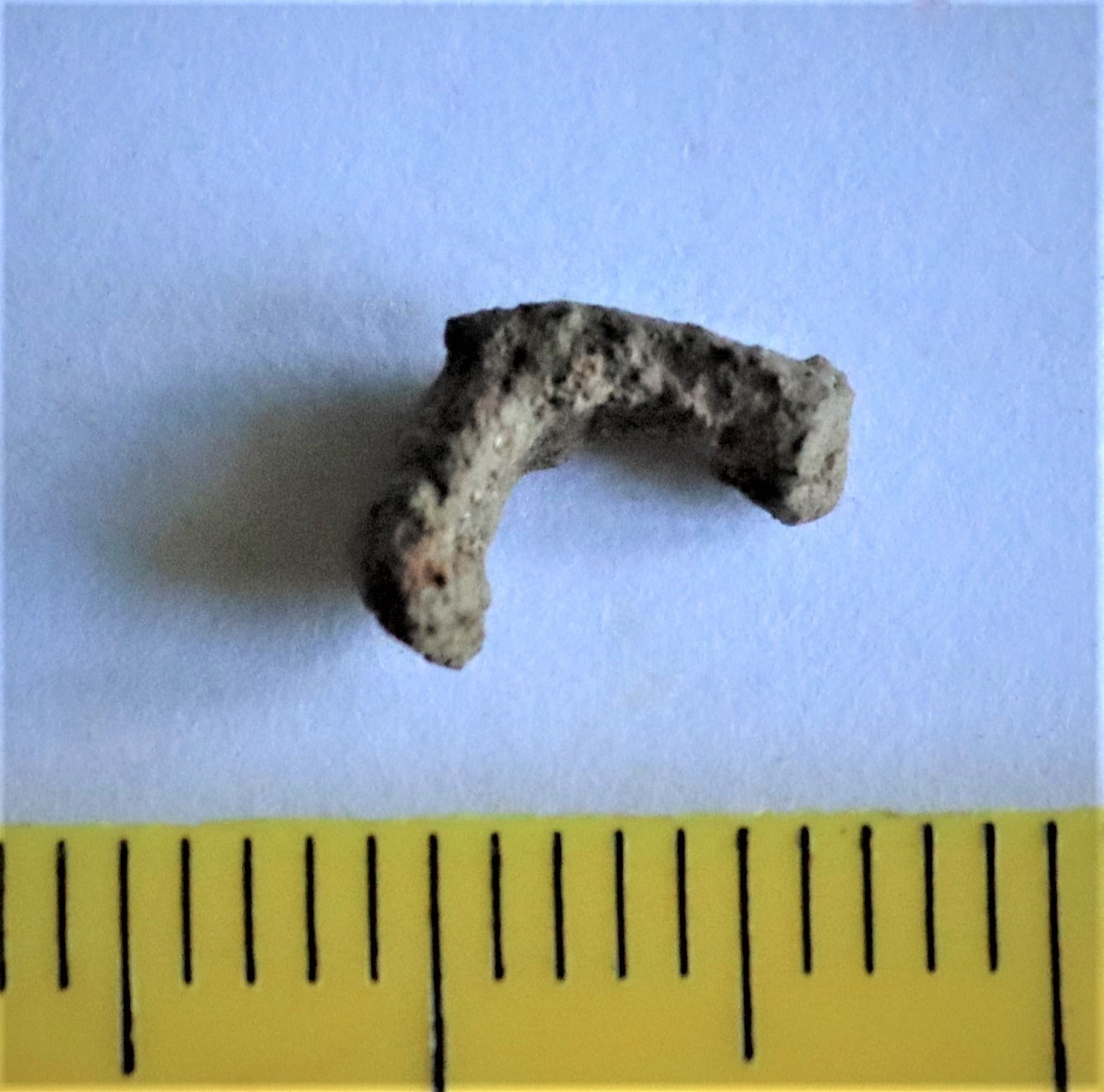
Ure
Artefact fragment, iron.
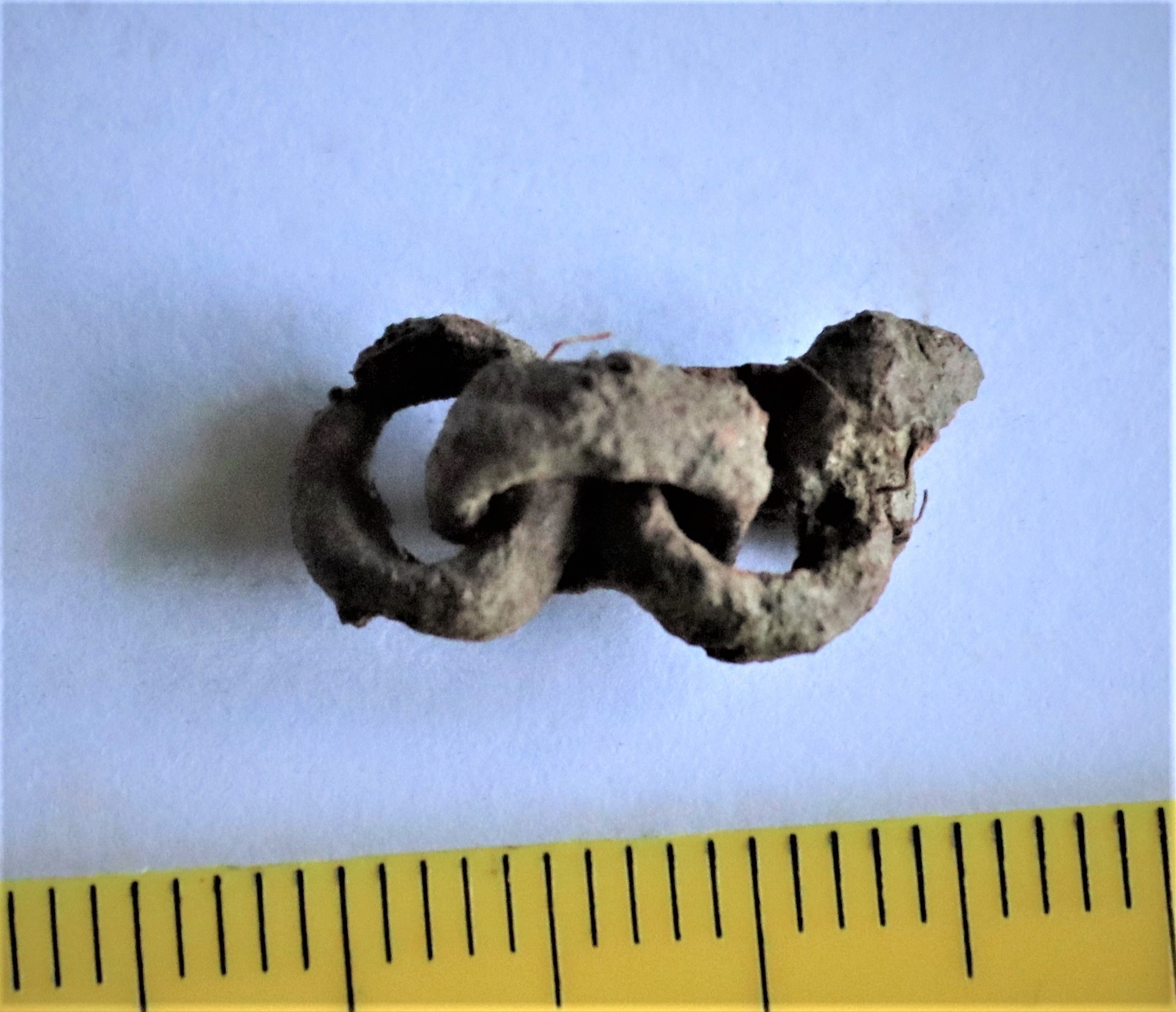
Ure
Chain fragment, iron, 4 links.
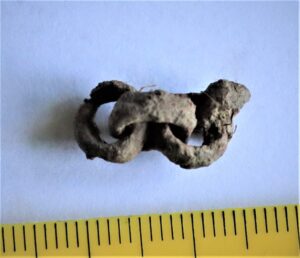
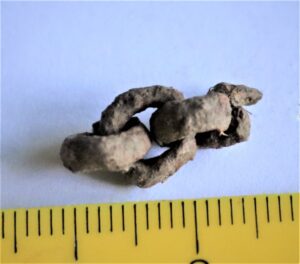
Chain fragment, iron, 4 links.
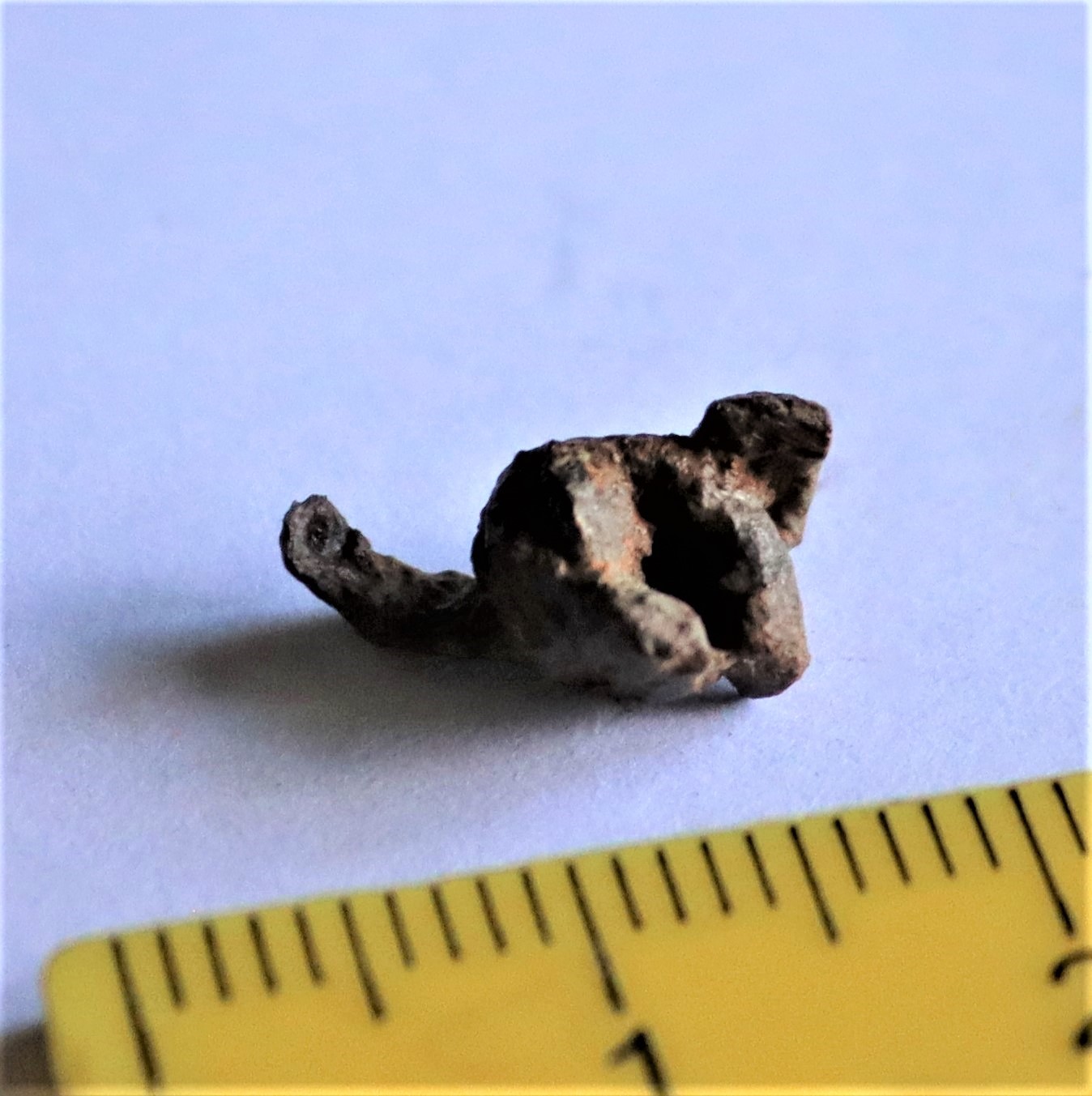
Ure
Chain fragment, iron.
The negative value refers to time Before Christ.

